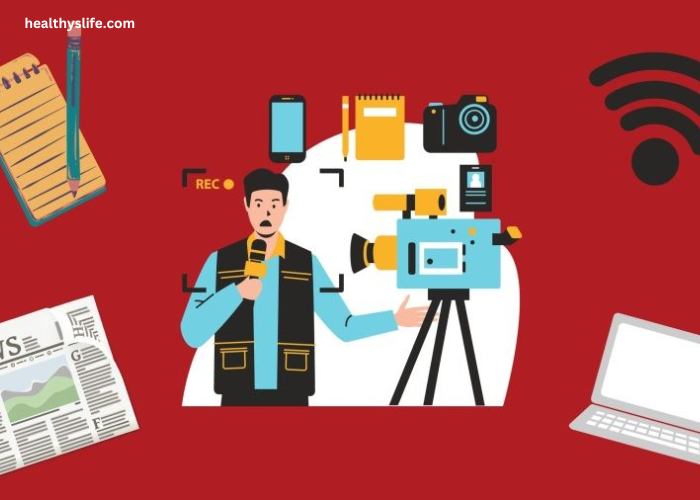In the age of digital media, the ways we consume news have undergone a radical transformation. While traditional media outlets like newspapers, television networks, and radio stations once held a monopoly on information, today’s consumers are turning to an increasingly diverse array of sources for their news. Among these sources is a phenomenon known as “InformalNewz”—a term that encompasses the rise of non-traditional, unverified, and often user-generated news content found primarily on social media platforms, blogs, and independent websites.
This shift towards informal news is part of a larger trend towards decentralizing media and democratizing the production and distribution of information. But what does the rise of InformalNewz mean for the future of journalism, public trust in the media, and the way we understand the world around us? In this article, we will explore the impact of InformalNewz on the media landscape, the advantages and challenges it presents, and its potential to reshape how we view news.
What is InformalNewz?
At its core, InformalNewz refers to news content that is created, shared, and distributed outside of traditional, institutionalized media outlets. Informal news often appears in the form of user-generated content (UGC), such as social media posts, blogs, vlogs, and short-form video clips. These stories are typically not subject to the same editorial oversight, fact-checking, or journalistic standards as those found in mainstream media outlets.
The term “InformalNewz” can encompass a wide range of content types, including breaking news, opinion pieces, personal stories, and even viral videos. Social media platforms like Twitter, Facebook, Instagram, TikTok, and YouTube have become key battlegrounds for informal news distribution, with influencers, independent journalists, and regular users all contributing to the flow of information.
The Rise of InformalNewz: A New Era of News Consumption
The rise of InformalNewz is closely tied to the widespread adoption of digital technology and social media platforms. With the advent of smartphones, high-speed internet, and ubiquitous social media networks, anyone with an internet connection now has the ability to share news with the world. This democratization of news production has significantly altered the media landscape.
In the past, information was largely controlled by traditional media gatekeepers: editors, publishers, and journalists who decided which stories were worthy of being told. The rise of InformalNewz challenges this top-down control, allowing a more diverse range of voices to be heard, including those that may be marginalized by mainstream media.
For example, social media platforms have allowed citizen journalists and activists to report on events in real time, often providing first-hand accounts of breaking news that would otherwise go underreported. During major protests, political upheavals, or natural disasters, individuals on the ground can now document events as they unfold and share them with a global audience. This has led to a more immediate and raw form of news dissemination, where personal perspectives are often as valuable as traditional reportage.
One notable example of this shift is the role of social media in covering the Arab Spring, where platforms like Twitter and Facebook became vital tools for organizing protests and disseminating information. Similarly, the #MeToo movement was largely propelled by informal news content shared on social media, giving a voice to survivors of sexual harassment and abuse.
Advantages of InformalNewz
- Speed and Timeliness: One of the most significant advantages of InformalNewz is its speed. In an age where breaking news can become obsolete within minutes, informal news sources allow for the rapid dissemination of information. This contrasts with traditional news outlets, which may take hours or even days to verify and publish a story. The immediacy of InformalNewz can keep people informed in real-time, particularly in fast-moving situations like political protests or emergency events.
- Diverse Perspectives: InformalNewz offers a wider range of voices and perspectives than traditional media outlets, which can be influenced by corporate interests, editorial biases, or governmental control. Independent creators, activists, and marginalized groups can share stories and viewpoints that may be ignored or misrepresented by mainstream media.
- Community Engagement: The interactive nature of social media platforms allows consumers to not only consume news but also actively participate in its creation and distribution. This fosters a sense of community and engagement among readers, who can comment, share, and discuss stories with others in real-time. This participatory model helps to break down the passive consumption of news that has traditionally defined the media landscape.
- Less Censorship: Informal news sources can often bypass the regulatory frameworks that govern traditional media, leading to fewer restrictions on content. This can allow for more freedom of expression, particularly in regions where press freedom is limited. While this can be a double-edged sword, it offers an opportunity for previously silenced voices to emerge.
Challenges of InformalNewz
While InformalNewz has many advantages, it is not without its challenges. The lack of editorial oversight, fact-checking, and accountability that typically comes with traditional journalism raises important questions about the quality and accuracy of informal news content.
- Misinformation and Fake News: One of the most significant challenges associated with InformalNewz is the prevalence of misinformation and fake news. Without the rigorous fact-checking processes found in traditional newsrooms, informal news content can easily spread false or misleading information. This has been especially evident in the rise of conspiracy theories, hoaxes, and viral rumors on social media platforms.
The spread of misinformation has real-world consequences, as seen in the COVID-19 pandemic, where false health information circulated widely, leading to confusion and distrust. In response, platforms like Facebook and Twitter have implemented measures to combat misinformation, but the sheer volume of content makes it difficult to control effectively.
- Echo Chambers and Confirmation Bias: InformalNewz is often consumed in echo chambers—closed communities of like-minded individuals who reinforce each other’s beliefs. Social media algorithms are designed to prioritize content that aligns with a user’s interests and past behavior, often leading to the spread of news that confirms pre-existing biases. This creates a fragmented media landscape, where people are exposed only to information that supports their worldview, making it harder to have meaningful debates or reach consensus.
- Accountability and Credibility: Without the institutional checks and balances that come with traditional media organizations, informal news sources often lack accountability. This can make it difficult for consumers to assess the credibility of the information they are consuming. While some independent journalists and influencers have built loyal followings based on trust and expertise, many others operate with little oversight or transparency, making it harder to discern fact from fiction.
The Future of InformalNewz
As digital technology continues to evolve, the impact of InformalNewz on the media landscape will only grow. Platforms like TikTok, YouTube, and Instagram are increasingly becoming primary sources of news for younger generations, with news organizations even using these platforms to engage with audiences directly. However, as InformalNewz continues to rise, it will be important for both consumers and platforms to find ways to ensure the integrity of the information being shared.
One potential solution is the rise of “media literacy” education, which teaches people how to critically evaluate news sources, identify misinformation, and understand the biases inherent in all media. This is an essential skill for navigating an increasingly complex media environment, where formal news sources and informal news sources coexist.
Moreover, platforms and independent creators may need to adopt more stringent self-regulation or peer-review practices to ensure that their content is reliable and trustworthy. Some emerging technologies, such as blockchain, may also provide new ways to authenticate and verify news content, giving rise to a more trustworthy and decentralized media landscape.
Conclusion
The rise of InformalNewz is a powerful and disruptive force in the media landscape, reshaping the way we consume, produce, and share news. It offers new opportunities for diversity of voices, speed, and engagement, but also raises important challenges related to misinformation, echo chambers, and accountability. As informal news platforms continue to evolve, it will be crucial for both consumers and creators to engage critically with the content they encounter. The future of InformalNewz may depend on striking a balance between the democratization of information and the need for accuracy, transparency, and responsibility in news reporting.
As we continue to navigate this new era of media, it’s clear that the line between formal and informal news will only become more blurred, making it an exciting, if uncertain, time for the future of journalism.


